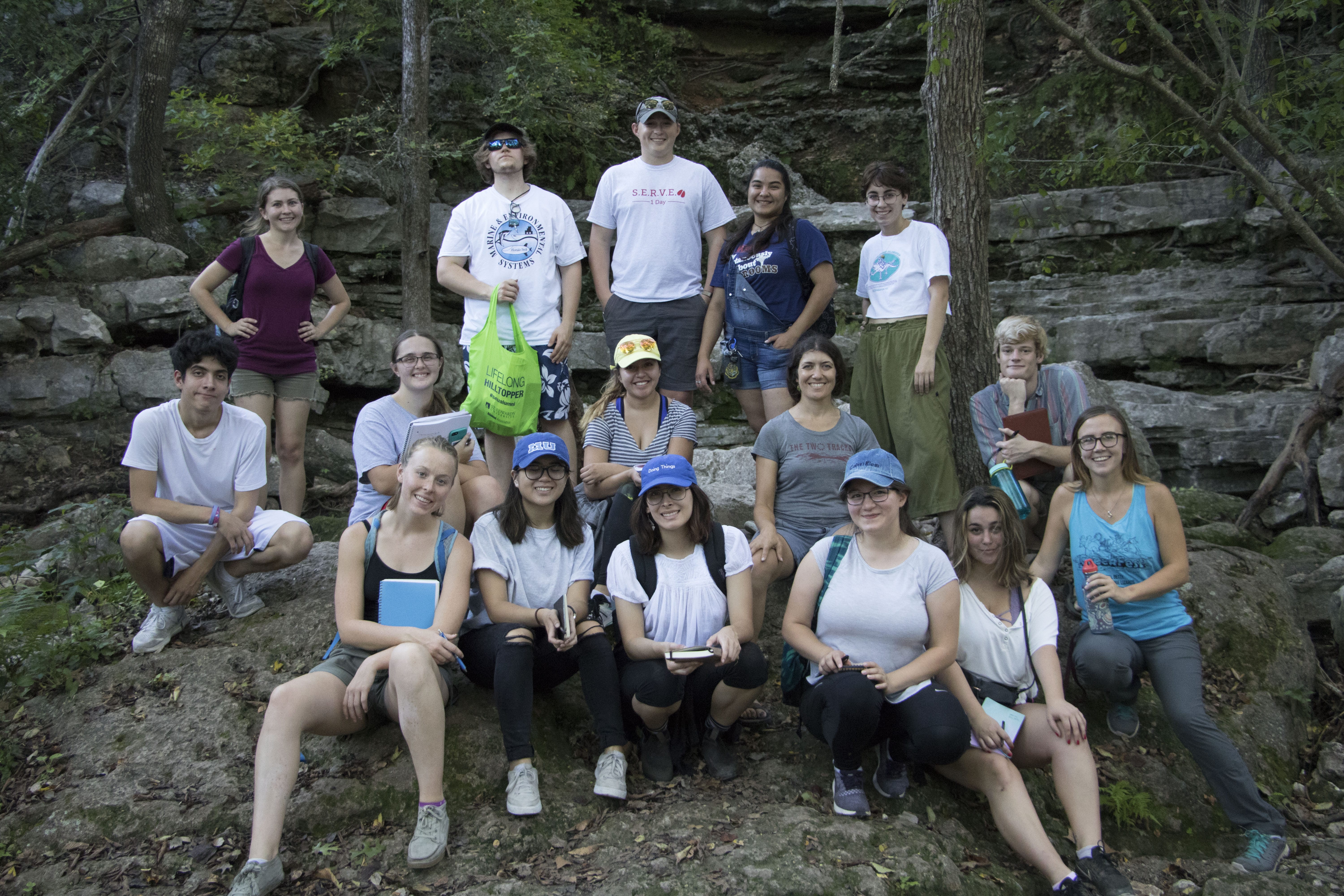For the class’s fourth field trip, the majority of us met with Angela Richter and Teresa Johnson from the Save Barton Creek Association. They were very knowledgeable about the creek, springs, and greenbelt and were kind enough to take the time to share information about each with us!
We explored the SPLASH! aquifer exhibit, the kid zone that is part of the Barton Springs Bathhouse, to help us learn about:
- Threats to the springs and creek
- Examples: Littering, dumping of treated sewage water into creeks, and other man-made problems that impact the greenbelt
- The important/protected species that live there
- Examples: Barton Springs Salamander, Golden-Cheeked Warbler, Black-Capped Vireo, Austin Blind Salamander, etc.
- The negative effects that toxic chemicals and algae blooms can have on aquatic wildlife
- Edward’s aquifer facts
- Examples: The three zones (contributing, recharge, and confined zones), the geology of each zone, and groundwater monitoring within the aquifer
From there, we learned a little bit about the history of the bathhouse and Eliza Spring. Angela told us that the Barton Springs Bathhouse was built in the 1940s and is now considered a historical site in Austin. Of course, they’ve done renovation upgrades to the building since then, but the original structural integrity is still there along with its beauty as the focal point of Barton Springs Municipal Pool. Angela took us just outside of the bathhouse to look down into Eliza Spring. It got its name from one of the daughters of William Barton, the man who claimed and named the springs after himself in 1837. Originally constructed as an aquatic amphitheater to keep people cool during club meetings before AC, the spring is now closed off to the public. It was discovered many years ago that there was one of the largest populations of the endangered Barton Springs Salamander living within Eliza Spring. While this population size may not have seemed large to people who were unaware of the species, those who knew how critically endangered this species was (and still is today) jumped into action to protect it. People in charge of the spring are still seeing to its maintenance and keeping a close eye on the health of the salamander population within it.
From there, we started our short hike into the greenbelt with Angela leading the way. In its entirety, the greenbelt stretches almost 8 miles, but we only hiked about 0.5 miles in before having to turn back. In this time, however, we learned a lot! Angela told everyone that the greenbelt is part of the Balcones Canyonlands Preserve. It’s open to the public, as I’m sure we all know from visiting there at least once, and each section is managed by a different organization. The SBCA manages a certain amount of the trail to remove invasive species that get reported, litter people don’t dispose of correctly, do general trail maintenance, and more. Teresa mentioned that there is a cleanup crew that anyone can join, so you can get more information on that if you’re interested in joining! When we started the hike, Angela told us to take special notice of how the plants change as we get further along the trail. She later revealed that the reason for the change in vegetation was because of the riparian zone.
We were taught the importance of the Edwards Aquifer next. It provides drinking water to 2+ million people! Its geology is majority karst limestone, and the aquifer is divided up into segments. The Barton Springs segment, we learned, is the most vulnerable to pollution because it’s the smallest segment, so any pollutant’s potency and environmental impact is magnified in this area. This is one of the reasons the SBCA is so important. They fight for the overall health of the springs, the creek, and the greenbelt which sometimes means getting political. They’ve had to fight the City of Austin on multiple occasions when certain construction projects get proposed that could have negative effects on the area. We all know how easily and quickly nature’s balance can get messed up by humans, so what Angela, Teresa, and the rest of the SBCA are doing for the current health of the entire area is crucial to its future.

Nat and Angela discussing how Barton Springs Pool gets cleaned (they used to use bleach before realizing how bad that was!)
The Save Barton Creek Association was founded in 1979. It was founded with one goal: to help the springs in anyway it could. The association has definitely upheld that goal! Today, their main focuses are advocacy and education. While they understand the importance of the aquifer, greenbelt, springs, and creeks to the overall health of Austin’s environment, they acknowledge that not everyone is as privileged with that knowledge and awareness. By educating young people about the area’s importance, the SBCA is ensuring the future health of the springs. Teresa and Angela also told us about two internship positions the association has every year. The spots are currently filled with UT students, but anyone can apply each year!
Overall, the experience was very fun and informative. Despite the mosquitoes eating us for dinner, the hike was beautiful and we even got to see some dogs! Thank you to Angela and Teresa for taking time out of y’all’s busy schedules to teach our class about Barton Springs and the greenbelt. If you want to find out even more about the SBCA and how to get involved with their meetings and scheduled events, you can visit the website below.
http://www.savebartoncreek.org/
Post by Molly Williams
Photos by Molly Williams and Shirley Ochoa








Leave a Reply